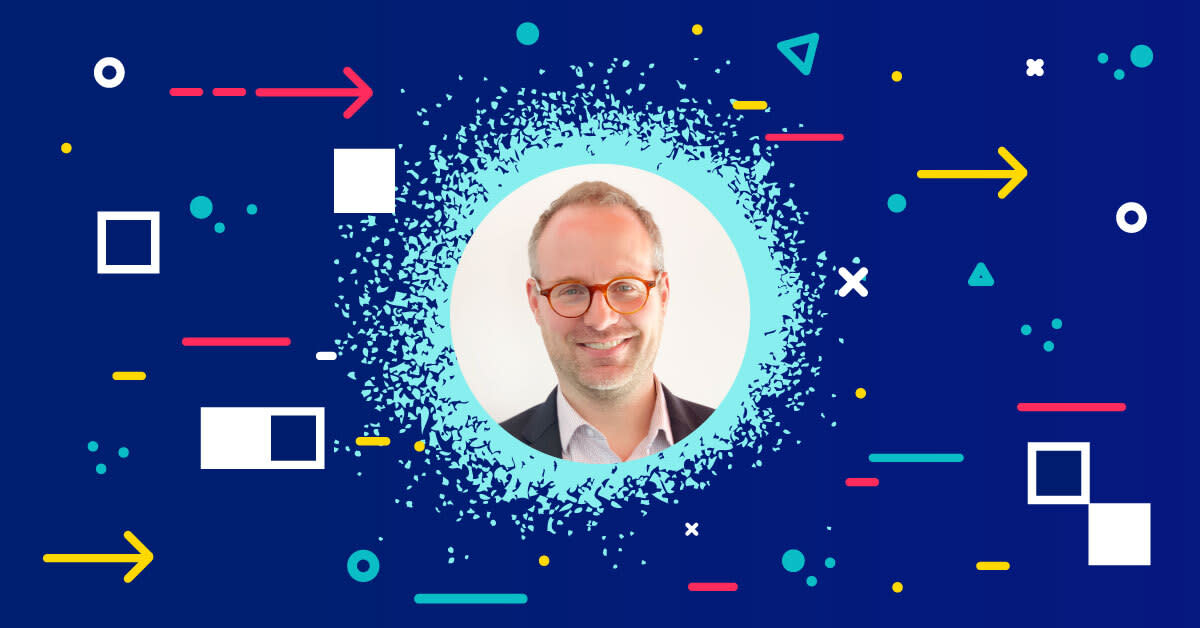Designing a World Where Young People Thrive
A move to New York City was a defining moment in the career of Michael Preston, Executive Director, Joan Ganz Cooney Center, at the Sesame Workshop.
“After I graduated from college, I started working in K-12 education. The Internet had just arrived in schools. l was interested in the inequities of the New York City Public School System. Teachers had computers and new technology thrust upon them without much training or knowledge,” says Michael.
Now with over 20 years of experience and a PhD under his belt, Michael is a pioneering thought leader on the convergence of innovation, media and children’s learning. Those early career observations would set Michael on a course to bring transformative technology into learning spaces for young people in his role at the Joan Ganz Cooney Center.
Learning by Design
Founded in 2007 by Sesame Workshop (the non-profit organisation behind Sesame Street and much more), the Joan Ganz Cooney Center is an independent research and innovation lab. The group’s programmes address the literacies that all young students need to succeed in the 21st century, including reading, writing, science and maths, and mastery of communications technologies.
“Sesame Street’s roots are in co-viewing – the principle that adults and children can experience media together,” says Michael.
“The show is multi-layered and has a level of humour directed at adults, encouraging them to watch with their kids and have meaningful conversations afterwards,” he adds. “Now, in this digital age, we think of this intergenerational, educational experience as ‘joint media engagement’ which is more interactive and participatory.”
Michael is a firm believer in the benefits of co-design and promoting youth autonomy to realise positive outcomes for young people using technology.
“Generally, digital technologies aren’t made for kids but widely adopted by them. We regularly ask ourselves, ‘How can we collaborate better with the innovation community to involve kids at the beginning of the process?’, says Michael.
“The methods we like to use in co-design environments tend to be about shifting the power dynamic and creating a level playing field, where kids act as peers in the design process with facilitating adults in the room.”
Shaping Future Conversations
Michael drives several key initiatives in participatory research and engagement practices. The Joan Ganz Cooney Center has joined forces with the LEGO Group and UNICEF to form the Responsible Innovation in Technology for Children (RITEC) project to explore how businesses and policymakers can create a digital world that prioritises children’s well-being. RITEC prioritised children’s voices, with over 300 children from 13 countries participating in a study, along with an analysis of existing survey data from 34,000 children aged 9-17 across 30 countries.
“We want to build a definition of what wellbeing in digital spaces looks like,” says Michael.
“Following the publication of this research in April, we now want to turn those ideas into design practices that development teams and policymakers can use.”
Another of the Joan Ganz Cooney Center’s key initiatives is called Next Gen Public Media, a partnership with the Corporation for Public Broadcasting, to help the US national system of local public radio and television stations become more responsive to the needs and interests of young people. One way the initiative promotes the inclusion of youth perspectives is by elevating the principles of participatory design with youth in order to make public media more relevant for young audiences.
The Joan Ganz Cooney Center regularly convenes with stakeholders in academia, civil society, industry and government, as well as families, guardians, and, of course, young people. So, how does Michael maintain balance across the groups?
“You have to create opportunities for dialogue among those groups as their incentives are different. From my experience, all of those stakeholders want to do good by young people, so as a field-building organisation we can facilitate the sharing of ideas to help elevate practice,” he says.
Working Better Together
In every initiative, Michael and his team remind themselves of the constantly changing motivations and goals of young people in digital spaces. So, what advice does Michael offer to organisations attempting to evolve with these changing needs?
“The relationship needs to be even closer than that. Children should have a consistent seat at the table, which is why many organisations now have panels and advisory groups that include young people,” he says.
“We know from research that kids can be very insightful about the media they engage with and the impact of technology on every aspect of their lives. The more we partner with young people, the better we are able to create media content that can help shape an enriching, positive world for them.”
